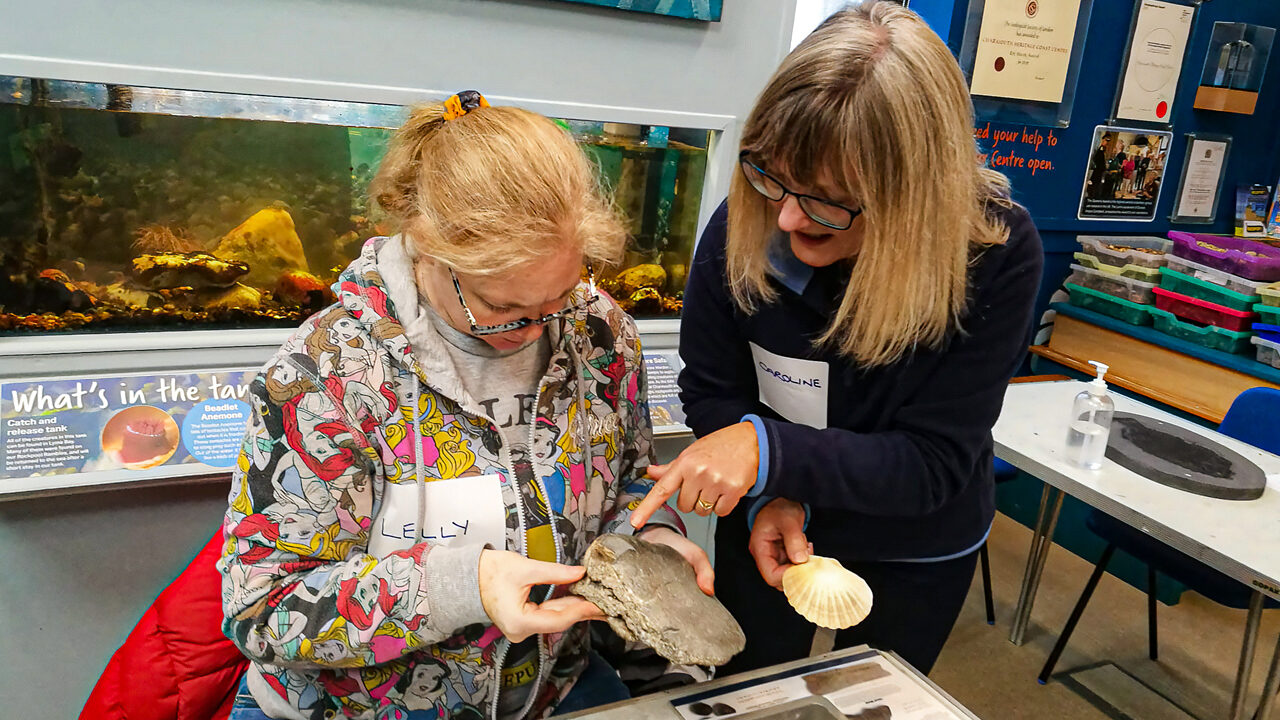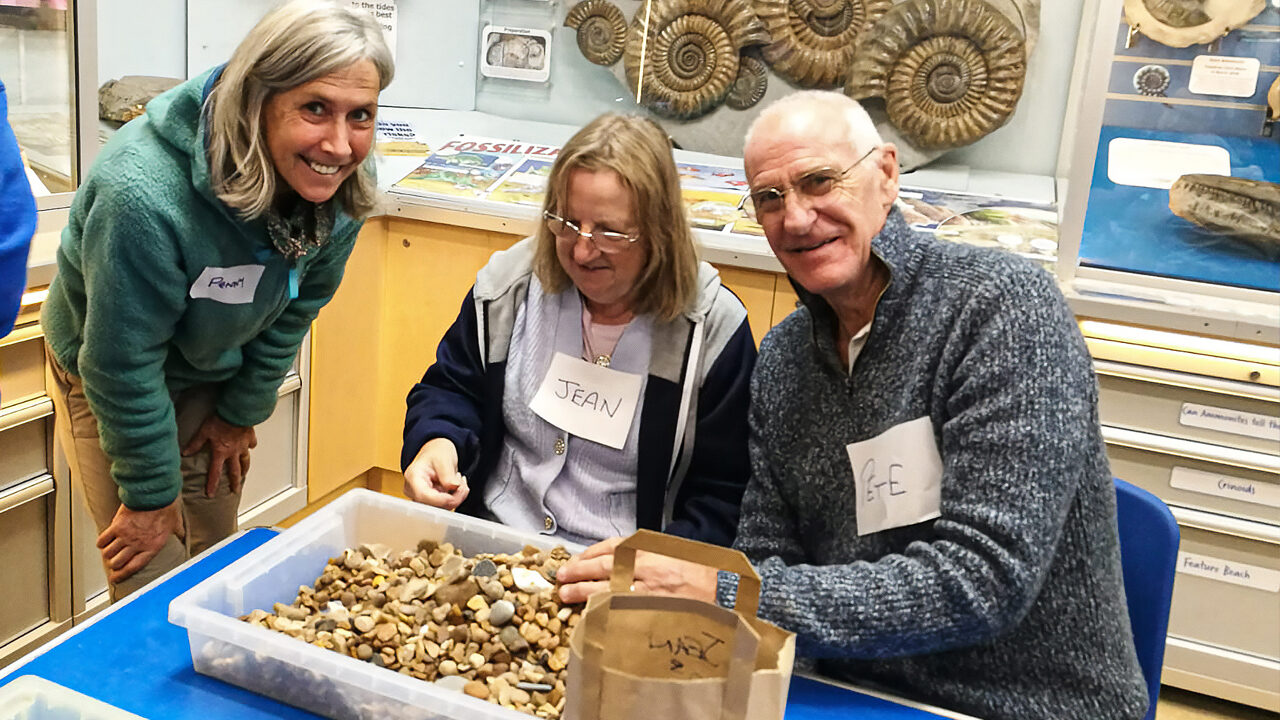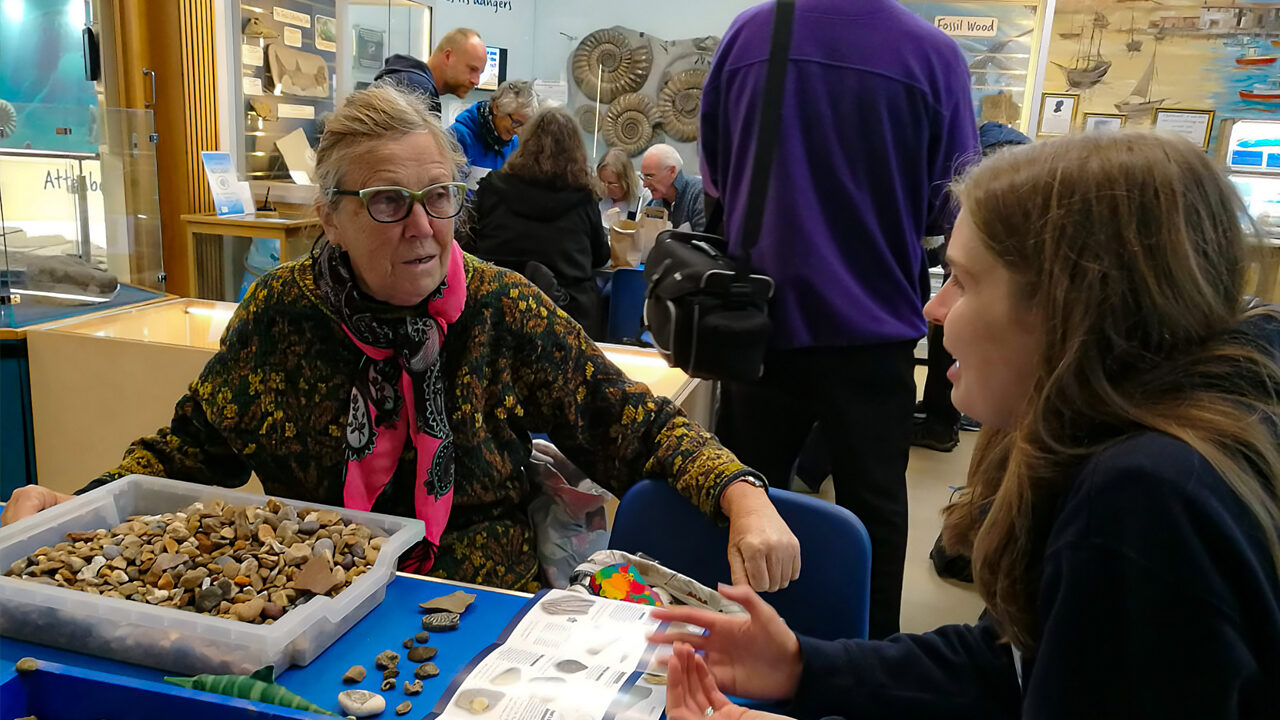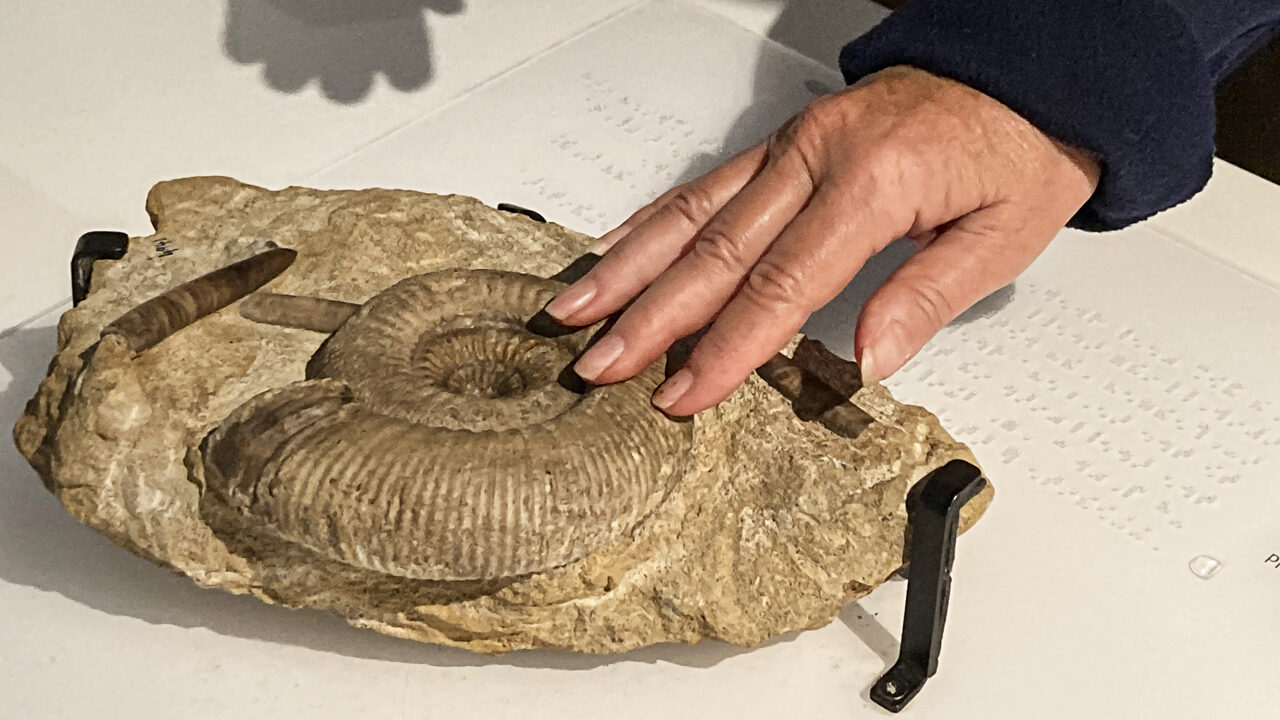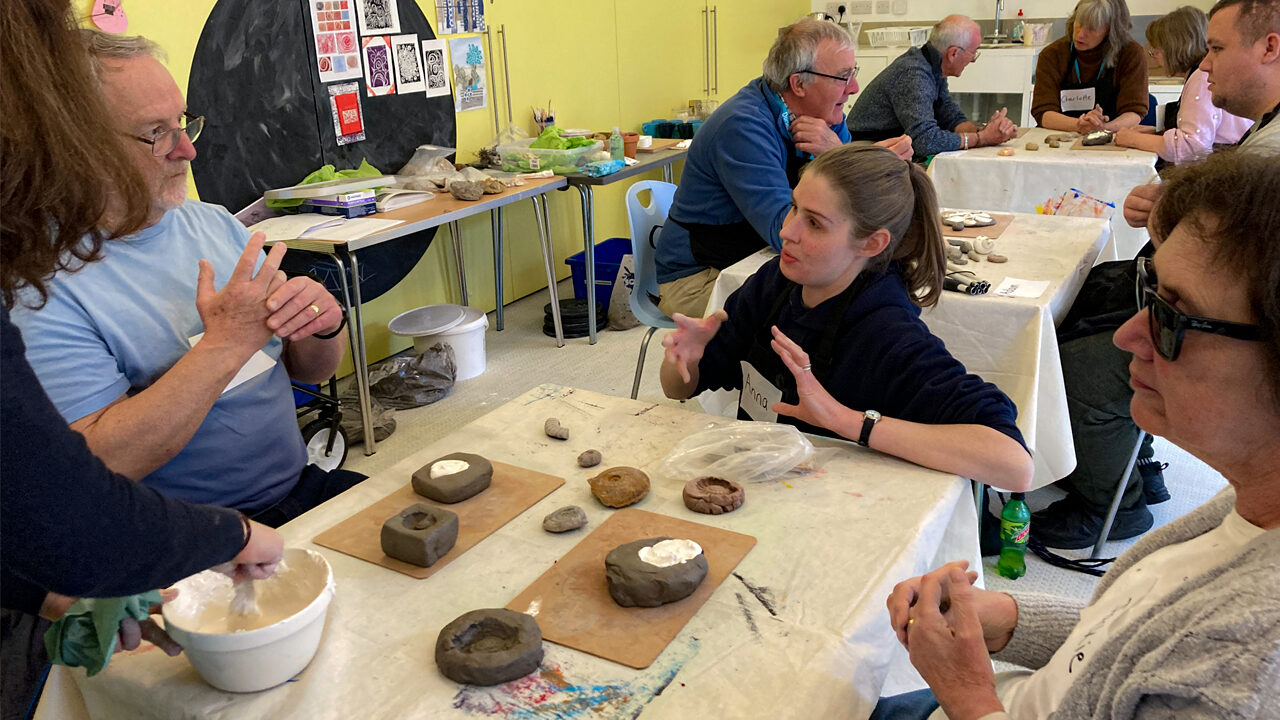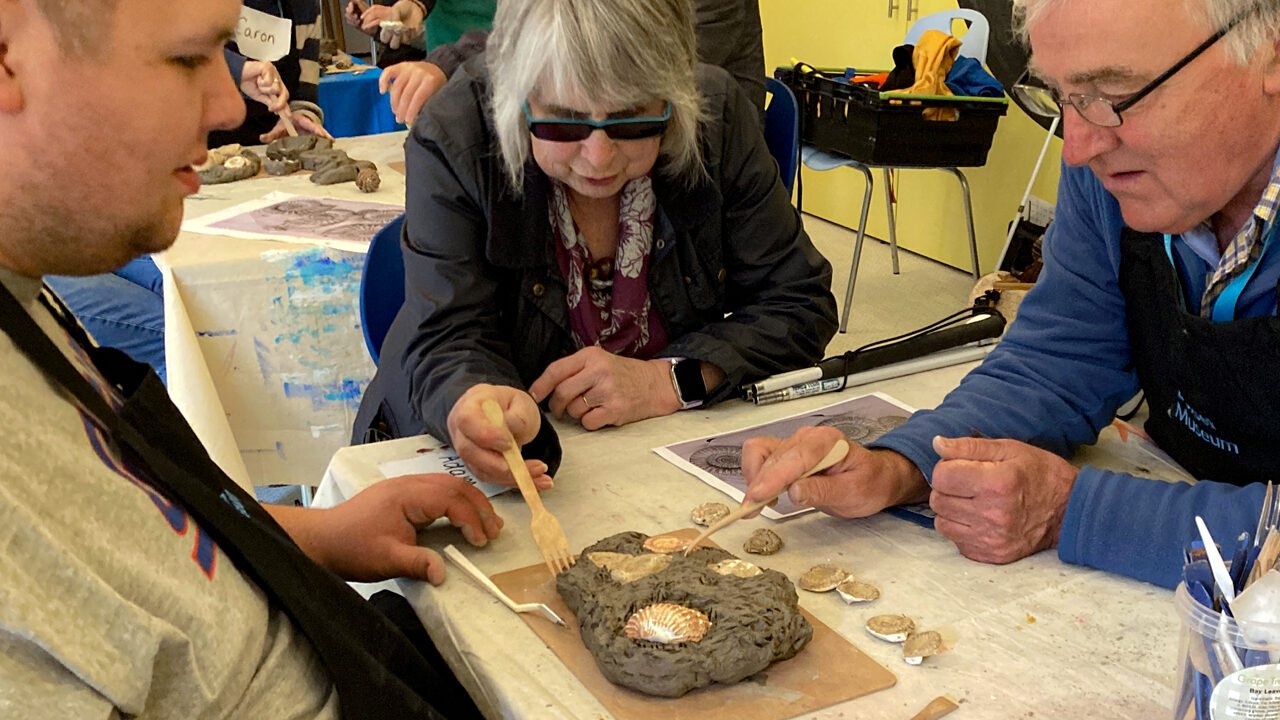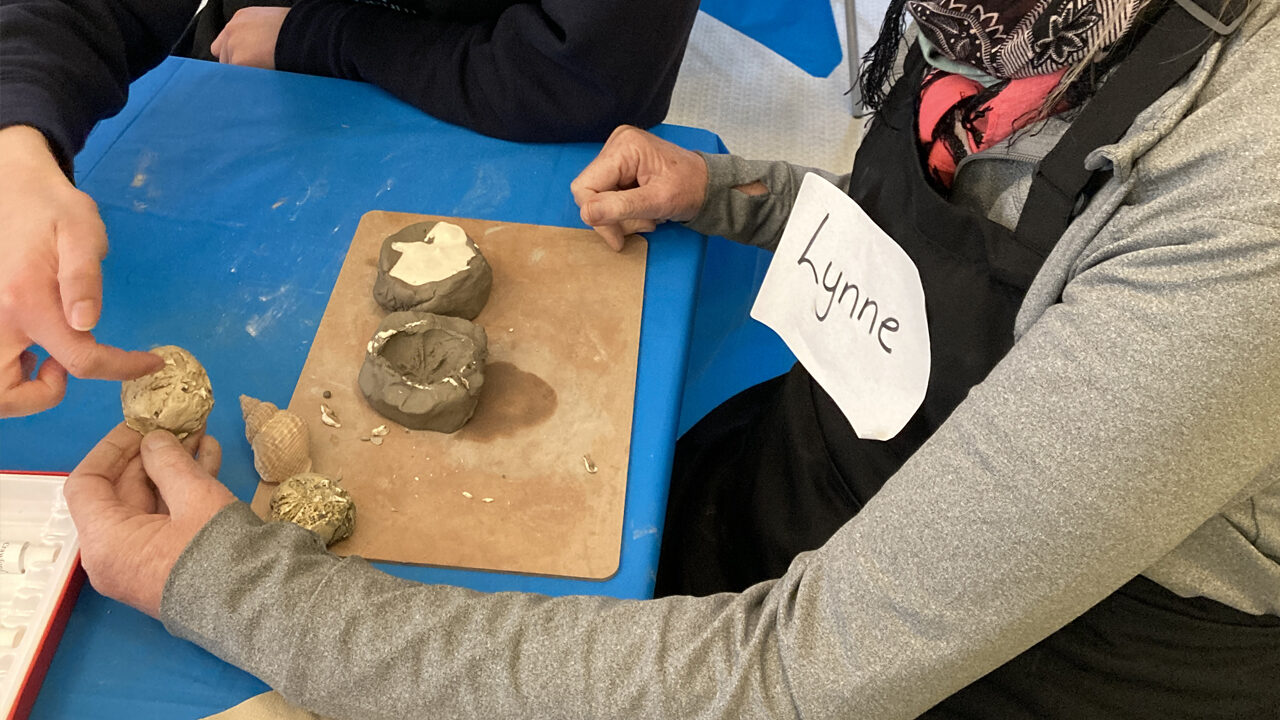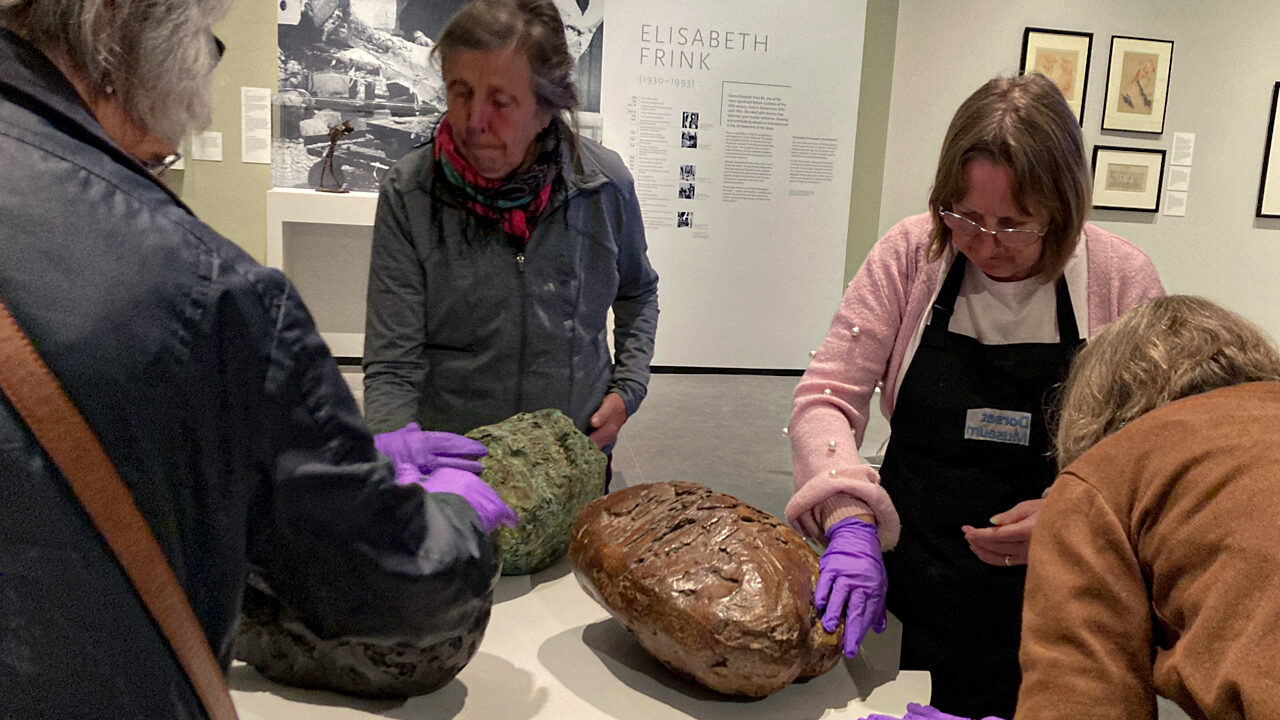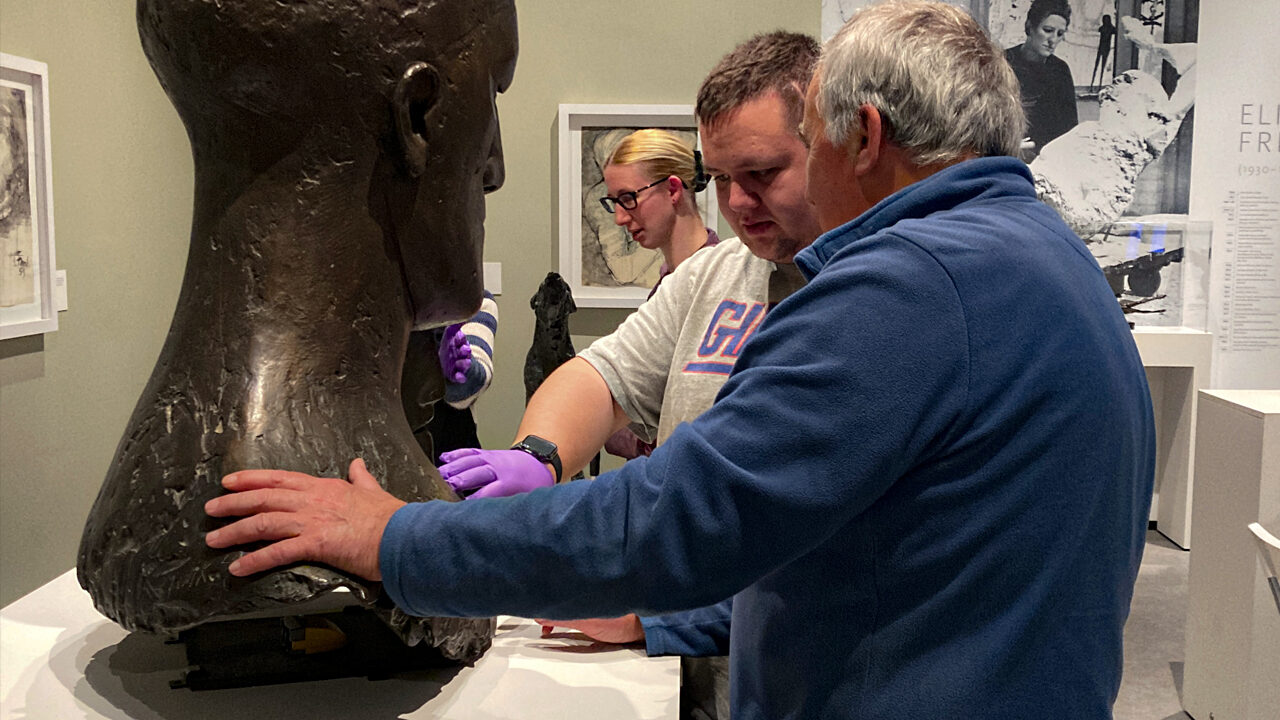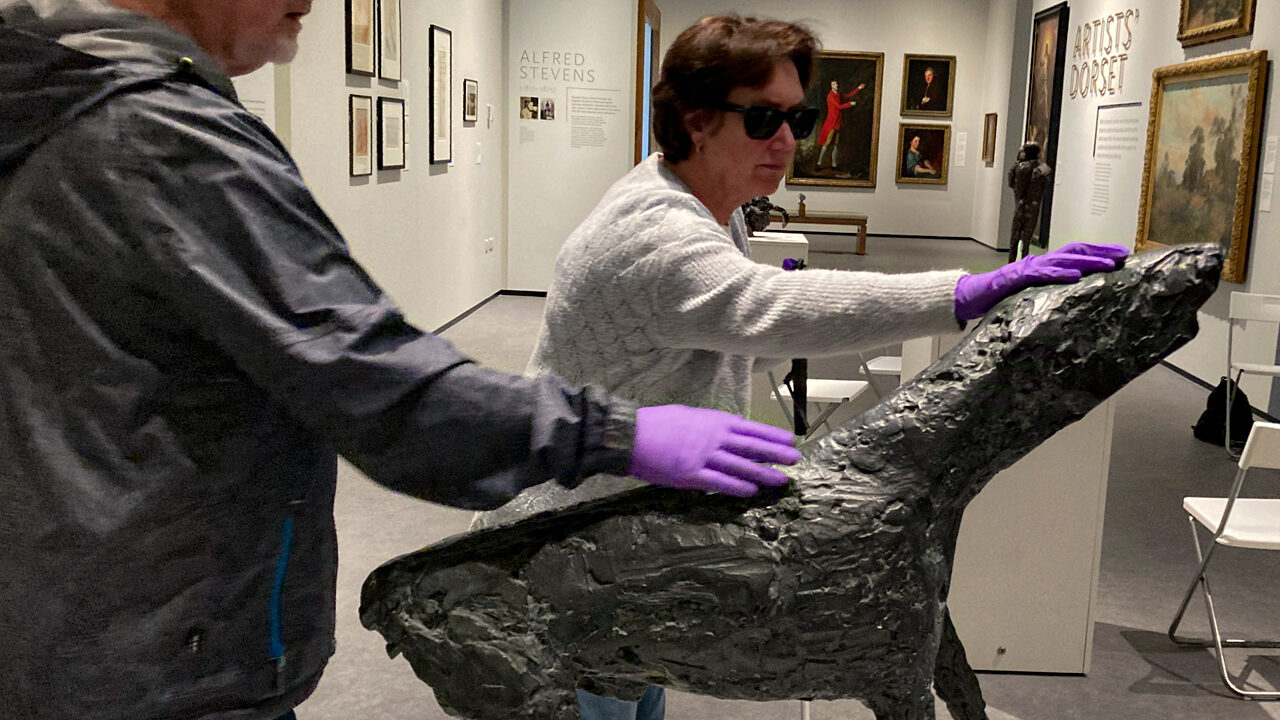Projects
Sensing the Past
April 28, 2023
A collaborative project with the Dorset Museum, Charmouth Heritage Coast Centre and members of the Dorset Blind Association in October and November 2022.
Moira Kopanycia Reynolds community support worker of the Dorset Blind indicated that many of their users suffered from a feeling of disconnection and isolation from their surroundings which were exacerbated by the pandemic and the lockdown. Blind and visually impaired people often experience high levels of anxiety when visiting public spaces. The project, funded by Wessex Museums Partnerships and the National Portfolio Association was created to connect participants with a shared interest in an environment where they felt safe and supported. Group members explored the history of the Dorset Coast through an initial online Zoom talk during the lockdown, a sensory session at Dorset Museum and a visit on location to the Charmouth Heritage Coast Centre in October and November 2022. Fossil and shell casting in clay and plaster at Dorset Museum proved to be very enjoyable, participants experienced the indentation of the fossil in the clay and the setting of the plaster in the clay whilst learning about how fossils are created.
One participant said “The sensory experience is really good as you can feel everything in the plaster first and in the clay you can feel where the fossil has been pushed in and where the plaster cast came out. You can feel every little line, nook and cranny and everything that has come out has been preserved in the plaster cast. It is a very moving impression as because when I had my sight before I can build a picture in my mind of what I am holding in my hand as I move my fingers over each bump.”
Volunteers from Dorset Museum were incredibly supportive, some with specialist knowledge presented information about different time periods. The group handled a variety of tactile fossils including ammonites and belemnites, models of creatures and scent boxes of magnolia for the first flowering plants, ferns and pines for the Cretaceous period and smells of the sea for the Jurassic coast. Specialist input and knowledge were also provided by Anna Holbrook warden and the education and outreach manager from Charmouth Heritage Coast Centre.
The group then visited Charmouth Heritage Coast Centre where they hunted for fossils in trays of shingle and gravel collected from the coast earlier. Group participants really enjoyed this activity and this proved to be very successful as everyone was very engaged and it involved a lot of touch and careful sorting through.
One DBA group member said “I can feel the shapes so I know roughly what the difference between a fossil and a stone is. Because I have some vision, I can see certain fossils if they are bigger, I can see certain shapes. Touch is a big thing – I have found an ichthyosaur vertebrae, some ammonites and belemnites, you can feel the ridges of the ammonite. It is important to touch as if you are completely blind – for other people with worse vision, touch would be a major factor for finding fossils.”
Many knowledgeable staff and volunteers were very supportive and answered lots of questions, there was a wonderful variety of Charmouth seaweeds in tubs, another lovely tactile and sensory experience for the group. There were many handling objects and some incredible ichthyosaurs, where details could be felt as well as other large incredible fossils including the Charmouth scelidosaurus to touch and engage with in addition to the David Attenborough sea dragon.
The second phase of the project involved members of the Dorset Blind Association revisiting Dorset Museum for a further fossil casting and painting session, a touch tour of the Elizabeth Frink gallery and a group activity involving the placing of their casts into clay to create an assemblage inspired by the death assemblages at Dorset Museum and Charmouth Heritage Coast Centre. This art piece will form part of a touch display with audio recordings from the project in the Natural Dorset Gallery later this year and will then travel to Charmouth to be displayed within the centre for a further three months.
